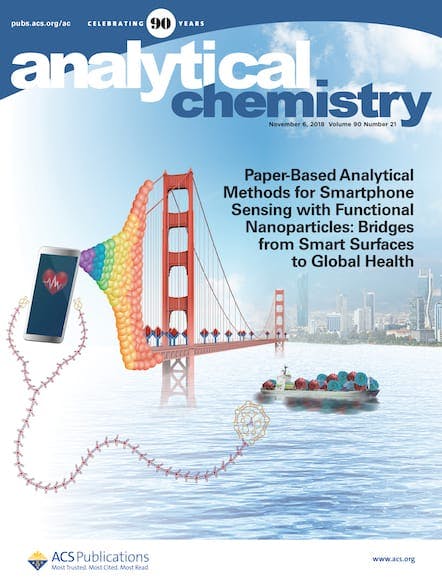Chemical & Engineering News covers the world of chemistry, from research and education to business and policy. Here’s a sampling of their coverage of research from ACS journals: *** Volkswagen emissions deception may have cost $430 million and 46 lives Volkswagen provoked plenty of outrage from consumers when it was revealed last year that nearly 600,000 […]

Chemical & Engineering News covers the world of chemistry, from research and education to business and policy. Here’s a sampling of their coverage of research from ACS journals:
***
Volkswagen emissions deception may have cost $430 million and 46 lives
Volkswagen provoked plenty of outrage from consumers when it was revealed last year that nearly 600,000 of their diesel vehicles were using software to fool emissions inspectors. Now a group of researchers is putting the cost of that deception in context, claiming higher-than-expected levels of toxic nitrogen oxides (NOx) released by the vehicles led to 46 deaths and $430 million in damages in the U.S., figures that track closely with previous estimates. Researchers compiled data from several sources to estimate how much NOx the cars released and used a model to estimate damages at the county level.
- Read the story in C&EN.
- Read the research in Environmental Science & Technology.
***
Calcium-ion batteries could pave the way to denser power storage
Batteries power everything from laptops to cars these days, so the hunt is on for a rechargeable battery that stores energy more densely than a typical lithium-ion battery. Researchers at Argonne National Laboratory have built a calcium-ion battery that can store, release and cycle energy, using manganese hexacyanoferrate, tin and a dry, nonaqueous electrolyte based on calcium hexafluorophosphate. Challenges remain, however, as the cathode material wasn’t able to transfer both available electrons to and from the Ca2+, limiting the battery’s capacity.
- Read the story in C&EN.
- Read the research in Chemistry of Materials.
***
Power outage leads to discovery of novel method for accelerating oxime ligation reactions
Chemistry’s history is full of unintentional discoveries. Now researchers at the University of Maastricht can join the happy accident club. A power outage led Tilman M. Hackeng and Stijn M. Agten to discover that freezing samples at -20 ˚C caused oxime ligation reactions to occur much faster than normal. The chill also allows the reaction to occur without a catalyst at a neutral pH.
- Read the story in C&EN.
- Read the research in Bioconjugate Chemistry.
***
Nitrogen regulation may hold the key to limiting toxic cyanobacteria blooms
Cyanobacteria blooms can produce toxins at concentrations capable of shutting down nearby municipal water systems, yet it was unclear what caused certain types of cyanobacteria to thrive over others and what conditions lead to spikes in toxin output. New research suggests water with high levels of nitrogen and lower levels of phosphorus may favor the growth of Microcystis, the most toxic type of cyanobacteria, over more benign species. Researchers say limiting nitrogen, as well as phosphorus, may be key to managing the growth of cyanobacteria in lakes.
- Read the story in C&EN.
- Read the research in Environmental Science and Technology.
Miniature probes could prove a boon to neurological disease research
A new generation of miniature microdialysis probes could help scientists unlock mysteries hidden in tiny regions of the brains of mice and rats. The new probes are as much as 80% thinner than previous models, coming in at 45 micrometers thick and 180 micrometers wide. Researchers could use the probes to harvest chemicals from minute regions of animal brains, which could provide valuable insights into the progression of neurological diseases such as Parkinson’s and Huntington’s.
- Read the story in C&EN.
- Read the research in Analytical Chemistry.
That’s just a small sample of the robust coverage C&EN provides. Get the latest news in your discipline with weekly e-mail updates.
